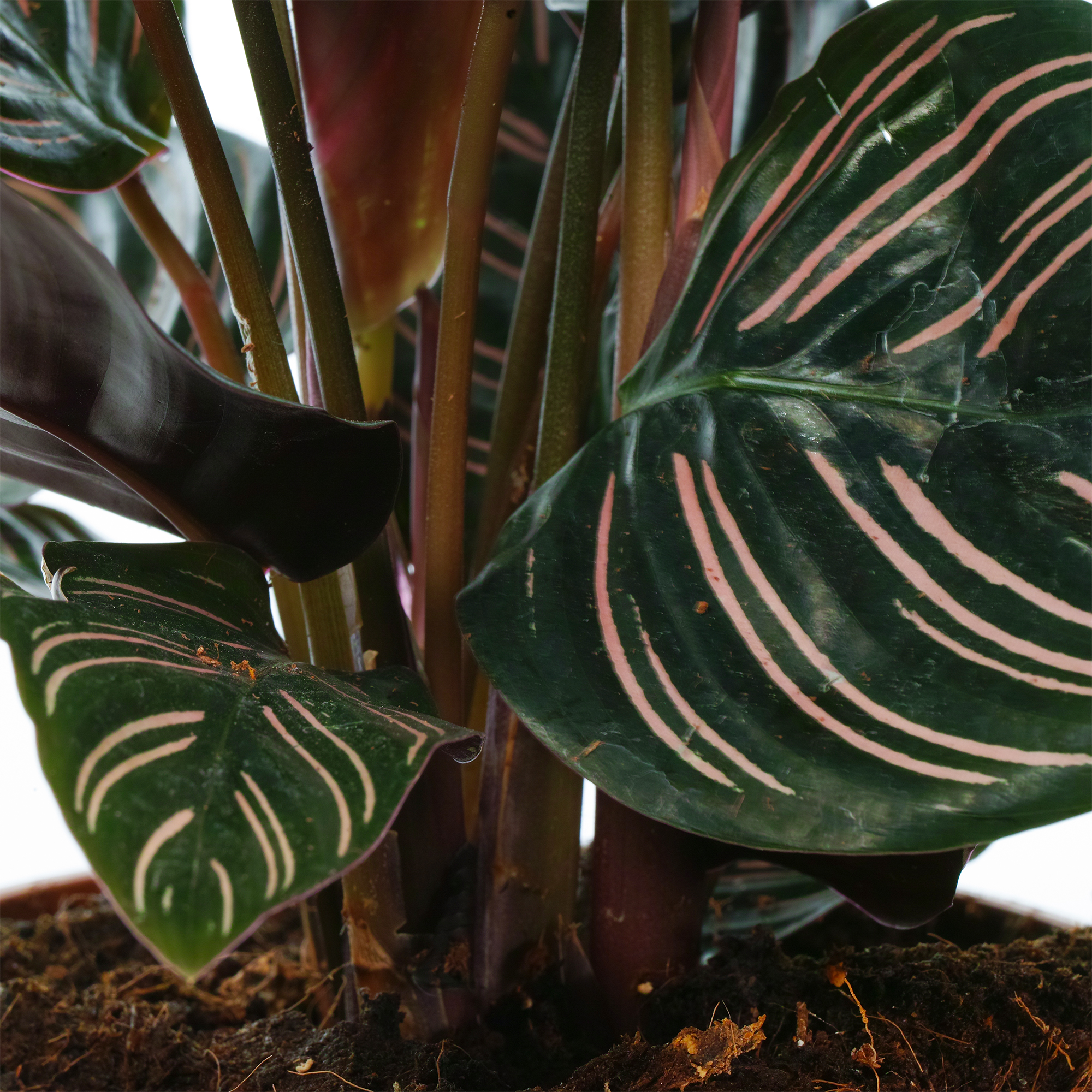Do you dream of transforming your home into a vibrant, green oasis? This comprehensive guide explores the captivating world of tropical houseplants, offering expert advice on selecting, caring for, and troubleshooting common issues. Whether you’re a seasoned plant parent or just beginning your indoor jungle journey, you’ll discover the secrets to unlocking the lushness and serenity of a tropical paradise right in your living room.
Bringing the Tropics Indoors
Introducing the vibrant energy of the tropics into your home is easier than you might think. Tropical houseplants add a touch of exotic charm to any space, creating a calming and inviting atmosphere. From leafy giants like the majestic Monstera to the delicate airiness of ferns, there’s a tropical plant waiting to brighten your day. If you are into beautifying your space, bring a touch of the tropics into your home with a tropical foliage plant and enjoy the fresh and lush interior.
Exploring Tropical Greenery
The diversity of tropical houseplants is astounding. Curate your own indoor rainforest with a mix of textures and forms, choosing from leafy giants, delicate ferns, quirky succulents, and vibrant flowering varieties. With proper care, you can enjoy a thriving indoor jungle year-round.
Nurturing Your Tropical Oasis
While tropical plants originate in far-off lands, caring for them at home is surprisingly straightforward. By understanding their basic needs, you can create an environment where they flourish.
1. Light: Tropical plants thrive in bright, indirect light—mimicking the dappled sunlight filtering through a rainforest canopy. A spot near a window, possibly with a sheer curtain to diffuse intense rays, is typically ideal. Avoid direct sunlight, which can scorch their delicate leaves.
2. Water: Consistent moisture is key, but avoid soggy soil. Allow the top inch of soil to dry out between waterings. Overwatering can lead to root rot, a common houseplant problem.
3. Humidity: Tropical plants crave humidity, reminiscent of their native habitats. Increase humidity by grouping plants together, using a pebble tray filled with water, or running a humidifier.
4. Nutrients: During the growing season (spring and summer), feed your tropical plants regularly with a balanced liquid fertilizer, following package instructions. Avoid over-fertilizing, which can be just as harmful as under-fertilizing.
The Benefits of Tropical Companions
Beyond their undeniable beauty, tropical houseplants offer numerous benefits:
-
Air Purification: These green wonders act as natural air filters, absorbing pollutants and toxins from the air. Ongoing research suggests that certain plants are particularly effective at removing specific pollutants, potentially improving indoor air quality.
-
Stress Reduction: Studies suggest that interacting with plants can lower stress levels and promote a sense of calm. The act of caring for plants can be therapeutic, offering a connection to nature.
-
Health Boosters: Some tropical plants, like snake plants and peace lilies, may increase oxygen levels in your home. While the impact of individual plants might be small, several plants can contribute to a healthier indoor environment.
Troubleshooting
Even with the best care, issues can arise. Here’s how to address common problems:
-
Yellowing Leaves: This can indicate insufficient light, overwatering, or nutrient deficiencies. Adjust the plant’s location, watering habits, or fertilization regimen.
-
Pests: Spider mites and mealybugs can infest houseplants. Treat with insecticidal soap or horticultural oil and isolate the affected plant.
-
Root Rot: Overwatering or poor drainage can lead to root rot. If suspected, remove the plant from its pot, trim affected roots, and repot in fresh, well-draining soil.
Selecting the Perfect Indoor Tropical Plant
Choosing the right tropical plant is like finding a new best friend. Consider your lifestyle, available space, and light conditions. Some plants thrive with minimal care, while others require more attention.
Beginner-Friendly Options
-
Snake Plant (Sansevieria trifasciata): Tolerates low light and infrequent watering.
-
ZZ Plant (Zamioculcas zamiifolia): Thrives in various light conditions and tolerates drought.
-
Peace Lily (Spathiphyllum wallisii): Prefers consistently moist soil and low to medium light, rewarding you with elegant white blooms.
Intermediate Choices
-
Monstera (Monstera deliciosa): The iconic “Swiss cheese plant” prefers bright, indirect light and regular watering.
-
Pothos (Epipremnum aureum): Versatile trailing vines that tolerate various light levels.
-
Philodendron (Philodendron hederaceum): Easy-going vining plant in a variety of colors and shapes.
Advanced Selections
-
Bird of Paradise (Strelitzia reginae): Demands bright light and consistent watering, rewarding you with vibrant, bird-like flowers.
-
Calathea (Calathea orbifolia): Prized for its patterned leaves, requiring high humidity and regular watering.
-
Fiddle-leaf Fig (Ficus lyrata): Popular but finicky, preferring bright, filtered light and consistent watering.
Quick Guide
| Feature | Considerations |
|---|---|
| Space | Choose plants based on available space. |
| Light Levels | Assess your room’s light and select plants accordingly. |
| Humidity | Consider using a humidifier or misting for humidity-loving plants. |
Growing Tropical Plants Indoors: A Reality
Bringing the lushness of the tropics indoors is absolutely achievable. By recreating the right conditions, you can cultivate a thriving indoor garden.
Recreating the Rainforest
Light: Mimic the dappled sunlight of a rainforest with bright, indirect light. East- or west-facing windows are usually ideal. Supplement with a grow light if needed.
Temperature: Maintain consistent warmth between 65-80°F (18-27°C). Avoid drafts and cold windows.
Humidity: Combat dry indoor air with a humidifier, pebble trays, or grouping plants together.
Watering: Water thoroughly when the top inch of soil feels dry, ensuring pots have drainage holes to prevent root rot.
Plant Selection
For beginners, resilient choices include ZZ plants, Snake Plants, and Pothos. As your confidence grows, explore options like orchids, Anthuriums, and Kentia Palms.
The Perks of an Indoor Jungle
Tropical plants offer more than just visual appeal. They purify the air, boost mood, reduce stress, and connect us with nature.
A World of Tropical Plants
The term “tropical plant” encompasses a vast array of species from warm, humid regions. This diversity allows you to create a truly unique indoor oasis.
Examples of Tropical Wonders
-
Flowering Plants: Bird of Paradise, Anthurium, Hibiscus, Orchids. These attract pollinators in their natural habitat and add vibrant color to your home.
-
Foliage Plants: Monstera, Philodendrons, ZZ Plant, Ferns, Palms (Areca Palm, Majesty Palm), Croton, Horsehead Philodendron. These are primarily appreciated for their stunning foliage, which ranges from iconic split leaves to variegated colors and unique textures. They may also contribute to improved air quality by absorbing certain pollutants.
-
Fruiting plants: Dwarf Banana Plant, Dragon Fruit Cactus. These plants add another level of exotic charm while potentially offering the bonus of homemade tropical fruit.
Ongoing research explores the fascinating adaptations of tropical plants, such as their diverse leaf shapes and complex relationships with pollinators. This list provides a starting point for your own tropical plant discovery.
Remember, growing tropical plants indoors is a rewarding journey of growth and discovery. Don’t be afraid to experiment, observe, and enjoy the process of nurturing these beautiful living beings.
- Greenhouse Storage Shed Combos: Your Guide to Combining Growing and Storage - April 21, 2025
- Greenhouse Shed Combo: Design, Build & Grow Year-Round - April 21, 2025
- Gingham vs. Plaid: What’s the Difference? A Complete Guide - April 21, 2025










